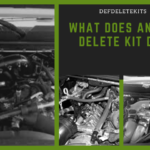Introduction
In the world of diesel engines, the need for efficient and clean combustion is paramount. To meet stringent emission standards, modern diesel engines are equipped with a system called Selective Catalytic Reduction (SCR). This system requires the use of Diesel Exhaust Fluid (DEF) to reduce harmful nitrogen oxide (NOx) emissions. In this article, we will delve into the world of DEF and focus specifically on the Diesel Exhaust Fluid Hand Pump, its importance, and how it can be used effectively.
What is Diesel Exhaust Fluid (DEF)?
Diesel Exhaust Fluid, commonly known as DEF, is a non-toxic, colorless, and odorless solution made up of 32.5% high-purity urea and 67.5% deionized water. It is used in vehicles equipped with SCR systems to convert harmful nitrogen oxides into harmless nitrogen and water vapor. DEF is injected into the exhaust stream, where it reacts with the catalyst to facilitate the conversion process.
The Importance of Diesel Exhaust Fluid Hand Pump
A Diesel Exhaust Fluid Hand Pump is an essential tool for handling DEF efficiently. It allows users to transfer DEF from storage containers to the vehicle’s DEF tank with ease. Here are some key reasons why a hand pump is crucial:
- Convenience: A hand pump provides a convenient and portable solution for transferring DEF. It eliminates the need for heavy lifting or complicated machinery, making it ideal for various applications.
- Accuracy: The hand pump ensures precise measurement and control while transferring DEF. This accuracy is crucial to avoid overfilling or underfilling the DEF tank, as both scenarios can lead to performance issues or damage to the SCR system.
- Versatility: Hand pumps are designed to work with various container sizes and shapes. Whether you have a drum, tote, or smaller DEF container, a hand pump can adapt to your needs.
- Cost-Effective: Investing in a hand pump is a cost-effective solution compared to more complex pumping systems. It eliminates the need for electricity or air-powered equipment, reducing operational costs.
- Reliability: Hand pumps are known for their durability and reliability. They are designed to withstand the corrosive nature of DEF and provide long-lasting performance.
How to Use a Diesel Exhaust Fluid Hand Pump
Using a Diesel Exhaust Fluid Hand Pump is a straightforward process. Here is a step-by-step guide to help you:
- Prepare the DEF Container: Ensure that the DEF container is clean and free from any contaminants. This step is crucial to maintain the purity of the DEF and prevent any damage to the SCR system.
- Attach the Pump: Attach the hand pump securely to the DEF container. Follow the manufacturer’s instructions for proper installation.
- Prime the Pump: Prime the pump by pumping the handle several times until DEF starts flowing through the pump.
- Connect the Nozzle: Connect the nozzle to the vehicle’s DEF tank. Ensure a secure connection to prevent any leaks.
- Start Pumping: Begin pumping the DEF into the vehicle’s DEF tank. Use a steady and controlled motion to maintain accuracy.
- Monitor the Level: Keep an eye on the DEF tank’s level to avoid overfilling. Most vehicles have a gauge or indicator to help you monitor the level.
- Disconnect and Store: Once the transfer is complete, disconnect the pump from the DEF container and store it properly for future use.
Frequently Asked Questions (FAQ)
Q1: Can I use any hand pump for Diesel Exhaust Fluid?
A1: It is recommended to use a hand pump specifically designed for DEF. These pumps are constructed with materials that are compatible with DEF and prevent any contamination.
Q2: How often should I refill my Diesel Exhaust Fluid tank?
A2: The frequency of refilling depends on various factors such as vehicle usage, load, and operating conditions. It is advisable to check the DEF tank level regularly and refill when necessary.
Q3: Can I mix different brands of Diesel Exhaust Fluid?
A3: It is generally not recommended to mix different brands of DEF. Each brand may have different formulations, and mixing them can affect the quality and performance of the DEF.
Q4: What happens if I run out of Diesel Exhaust Fluid?
A4: Running out of DEF can trigger a warning light on your vehicle’s dashboard, indicating that the SCR system is not functioning properly. It is crucial to refill the DEF tank as soon as possible to avoid any performance issues.
Q5: Can I store Diesel Exhaust Fluid for an extended period?
A5: DEF has a shelf life of approximately one year when stored in optimal conditions. It is essential to store DEF in a cool and dry place, away from direct sunlight and extreme temperatures.
Conclusion
A Diesel Exhaust Fluid Hand Pump is an indispensable tool for efficiently handling DEF.It provides convenience, accuracy, versatility, cost-effectiveness, and reliability in transferring DEF from storage containers to the vehicle’s DEF tank. By following a simple step-by-step process, users can easily use a hand pump to ensure the proper transfer of DEF. It is important to use a hand pump specifically designed for DEF to prevent any contamination or damage to the SCR system.
In conclusion, the Diesel Exhaust Fluid Hand Pump plays a crucial role in the efficient and effective handling of DEF. It provides a convenient and reliable solution for transferring DEF, ensuring the proper functioning of the SCR system and compliance with emission standards. By investing in a high-quality hand pump and following the recommended guidelines, users can ensure the smooth operation of their diesel engines while reducing harmful emissions.
Remember, maintaining the purity and quality of DEF is essential for optimal performance. Regularly monitoring the DEF tank level and refilling when necessary is important to avoid any performance issues. Additionally, storing DEF in optimal conditions and avoiding the mixing of different brands can help maintain its effectiveness.
If you have any more questions or need further assistance, feel free to reach out to us. Happy pumping!
Note: For more information on DEF and related products, please visit our website here.






